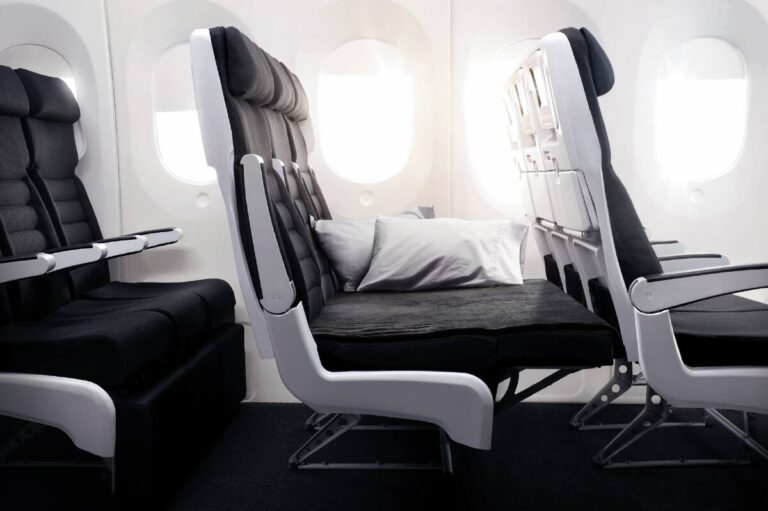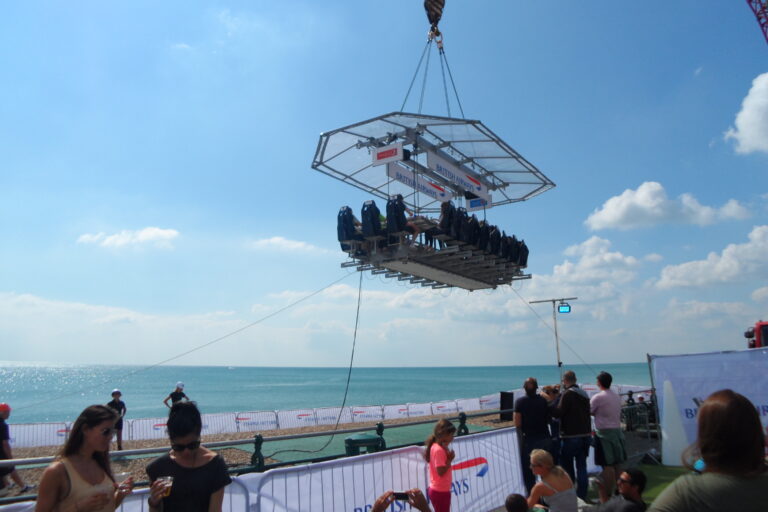My Thoughts on Flight Safety Awareness
We all know that flying is safer than driving a car, but during a visit to an airlines training facility for a tour late last year; it helped to put things into perspective that risks are associated with everything that we do. Today I’d like to share some information on Flight Safety Awareness.
The role of a flight attendant isn’t just about customer service
Although flight disasters are very rare, I find peace of mind in knowing that flight attendants must undertake various training exercises each year to ensure they are fully able to deal with a variety of situations, should the need ever arise. Such training actually forms a part of a cabin crew member’s annual recurrent or “SEP” checks; which are a mandatory requirement that’s imposed by airline regulators.
A large proportion of travellers unfortunately still have the belief that a flight attendant is just a glorified waiting role with the added perk of travelling to some glamorous destinations. It’s actually quite complex and I admire anyone who goes through the rigorous training, let alone continues to fly 30 years down the line.
Think of a flight attendant as your Doctor, Fire Marshall, Security Officer and Safety Advisor when on-board; in addition to providing you with drinks, refreshments and duty free at your seat. Flight attendants are required to achieve a minimum of 80% in a variety of examinations in order to be checked as “fit to fly” for another year.
Flight attendants never stop learning
In the past, I have had the opportunity to observe and participate in several of these sessions and they really do cover everything. From firefighting to decompression and even terrorism. The courses are truly in-depth and as you can understand joking around is not tolerated. If a crew member is messing around, most likely they will be asked to leave the class and will not be able to fly again until they pass the course. For me, it was also highly interesting to discover that the course content is constantly updated to reflect current worldwide affairs. Some airlines work by the policy of requiring all crew to undertake a condensed “refresher course” when the content is modified substantially; however this may sometimes be completed as an e-learning module that’s accompanied with a multiple choice exam. Basically, cabin crew members never stop learning.
A cabin crew member’s first priority is always the safety of everyone onboard and nothing else. Forget following the customer service guidelines, in the event of an emergency crew members are allowed to shout at passengers as it is for the safety of everyone on board. Flight safety awareness is paramount. An aircraft is able to operate without the inflight entertainment system working; but not if any safety features are defected.
A few tips
Although I am a frequent flyer, I always make a mental note of the nearest exits from my allocated seat onboard an aircraft. I might look at the seat-map online in advance, or just count the rows when I’m onboard. I also try to catch the names of the flight attendants who are responsible for the particular “area” of the aircraft that I am seated in. I actually do the same at a hotel and will double-check what to do in the event of an emergency and the distance of the emergency exits from my guest room. Some of my friends say it is unnecessary but I always go by the saying that it’s better to be safe than sorry and I’d rather be aware of my surroundings.
Onboard the aircraft, another thing I always do is devote my full attention to the safety briefing. Of course there are many like me who have witnessed both the video and the manual demonstration on a number of occasions, but it’s always worth paying attention incase there are any changes to the safety and security procedures. A good example would be that the FAA now permits the use of flight-mode enabled hand-held electronic devices for taxi, take-off and landing. I may be pointing out the obvious, but procedures do vary depending on which make and model of aircraft you are flying on, and of course the airline themselves.
Why the safety video is important
I do admit that some airline safety videos are a little “bland” and just stick to the facts, whilst others might tell a story or even be portrayed in a similar style to a music video which makes it fun and engaging. As long as the mandatory content is covered, the regulators are happy. Is it really that hard for passengers to put down their mobile phones for a few short moments to pay attention to information which could save their life? Unfortunately so, and I have empathy for the crew members and other passengers who are distracted by it; some whom may have never had the opportunity to fly before.
Just one more thing…
If you do happen to find yourself in any given emergency situation, always follow the instructions of uniformed staff members or the emergency services; whichever is closest to you at the time.
The next time you fly, please bear these thoughts in mind; and remember to thank the cabin crew for the sterling job they do on a daily basis – ensuring we are all safe.




I think they need to overhaul the safety instructions. They should drop stuff like how to use a seat belt and add on stuff about keeping your shoes on until at altitude. I know my opinion seems silly but I see a ton of people get on the plane, take their shoes off and not pay attention to the safety briefing. These are the same people that will slow everyone down in the case of an emergency evac. The seat belt issue is silly. I know there could be an odd person that can’t figure it out but 99.999999999999% know how to use a seat belt already.
That is a very good point! It does annoy me when people are also too busy using their personal electronic devices during the safety demonstration. It isn’t fair on others around them who are trying to listen.
Flight safety is something so important to me and i hate people talking through the demo s although we have seen them 100 s of times, i still pay attention.